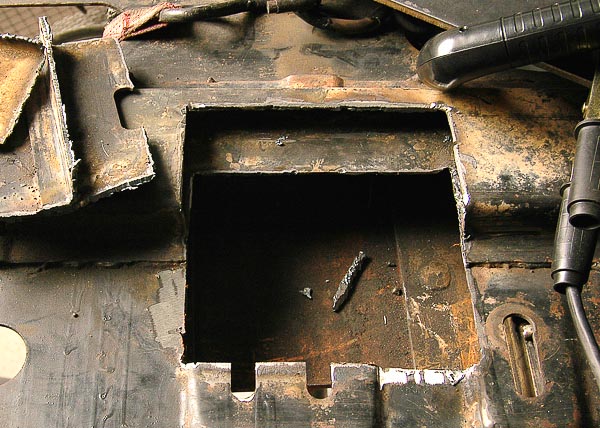
Using a plasma cutter takes some practice. The results are clean cuts with minimal slag. A plasma cutter is cost-effective for cutting and shaping metal—while minimizing metal warpage and distortion!
If your projects involve fabrication work, cutting metal is a regular chore. There are a variety of ways to cut and shape metals. Each method has its particular assets and shortcomings.
There are hot cutting tools like the oxygen-acetylene gas cutting outfit, which is somewhat portable for use in the field. Service trucks and recycling yards use oxygen-acetylene torches. Another popular method is plasma cutting; however, this requires electricity and an air supply. Ideal for any shop setting, the plasma cutter is out of its element in the field—unless a high-output generator and compressor are readily available on the service truck.
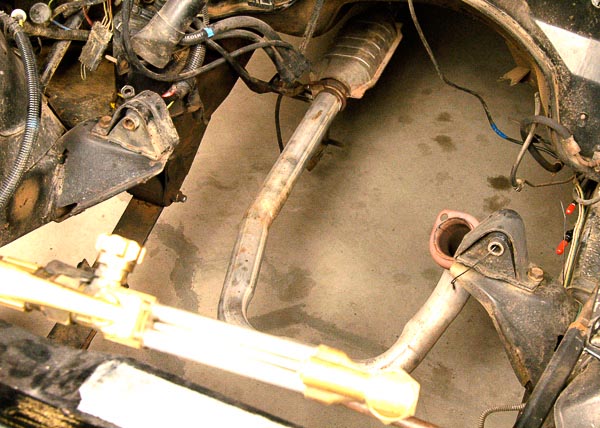
The four-cylinder engine frame brackets must be scarfed from this Jeep YJ Wrangler frame. Two tools that work well here are the traditional oxygen-acetylene cutting torch or a plasma cutter.
There are a variety of methods for cold cutting to preserve metal integrity or tensile strength. A basic bandsaw or, better yet, a liquid cooled bandsaw works well. Cold saws work on aluminum, magnesium and other non-ferrous metals that will not tolerate heat cutting. A lathe can also provide service, with special cutting tools and grinders for hard alloys and case hardened materials.
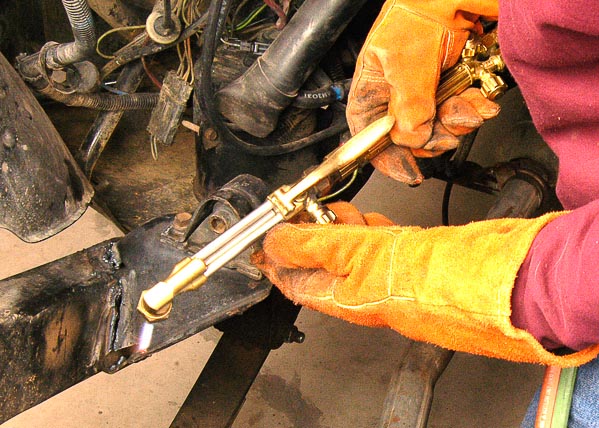
Here, I opt for the traditional oxygen-acetylene cutting torch. I will minimize heat and concentrate on a fast cut. The torch provides reasonable control, although a plasma cutter would do a better job by minimizing slag and follow-up grinding. Also, a gas cutting torch will use gas at a costly rate if you do much cutting by this method.
For the Jeep 4WD owner or a smaller 4×4 shop, there are also lighter tools that prove helpful. A chop saw and air-operated cut-off wheel work well on smaller projects. A drill press is always needed for making holes and odd jobs like operating a tubing angle cutter. If you are mass producing items with sized holes, punches and punch presses should be considered. Hole saws are useful for lighter gauge metal cutting. They do not hold up when used on thicker metals. Here, a plasma cutter and a hole cutting fixture would do a much better job.
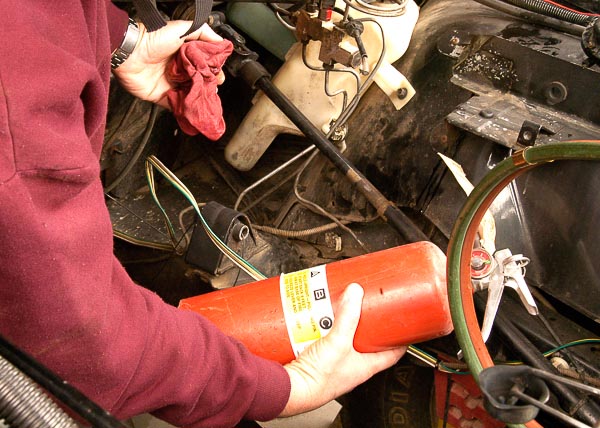
Gas torch or plasma cutting in an engine bay is risky! Always make sure there is no leaking fuel or other flammables around. Keep heat away from hoses, plastic, wires, brake pipes, the battery or any parts that could be damaged or weakened by heat! Make sure there is a fire extinguisher handy, and know how to use it—on a moment’s notice!
When deciding what tools work best for your needs, consider the kinds of metals you work with often. Softer metals like mild steel can be cut with heat, cold or by chop saw. In any case, be aware that too much heat can lower tensile strength and alter metal properties.
In this section, we will explore the best uses—and the right uses—for metal cutting tools!
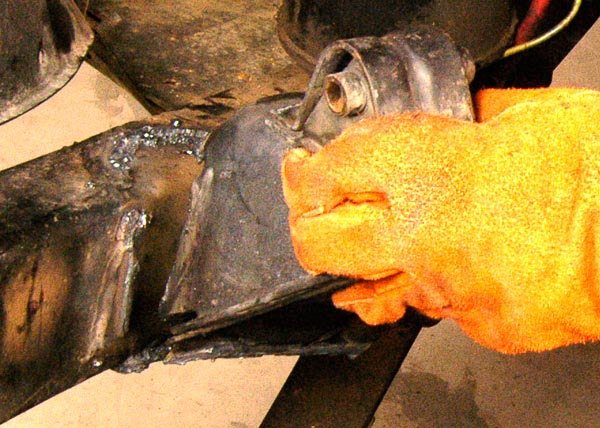
Here, the bracket comes clean from the frame. Original welds are purposely left intact. I did not want to undercut any weld areas. The factory uses metallurgically compatible filler wire during welding. I leave these areas alone to maintain the frame rail’s integrity.
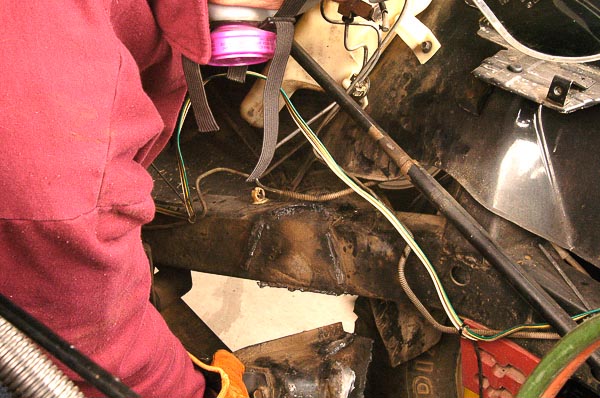
Opposite frame bracket is now removed. Note close proximity to pipes, wiring and sensitive plastics. I wear a respirator to avoid inhaling fumes while cutting. This Jeep YJ Wrangler is over two decades old. Avoid harmful fumes, wear gloves and eye protection. A respirator is advisable when cutting with heat, especially on an older Jeep 4WD.

Brackets removed, frame rails show factory weld seams still in place. Surface grinding will get frame rails ready for freshly fabricated engine frame brackets. This is a four- to six-cylinder inline engine change.
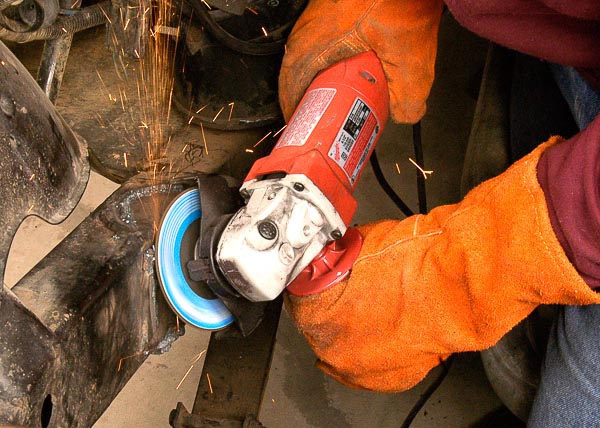
Every welder needs a quality grinder! This tool pays for itself quickly. By using the right grit disc, the rough excess metal comes off fast. Make sure your grinder will use standard, readily available disc sizes. Wear appropriate eye protection and gloves when grinding!
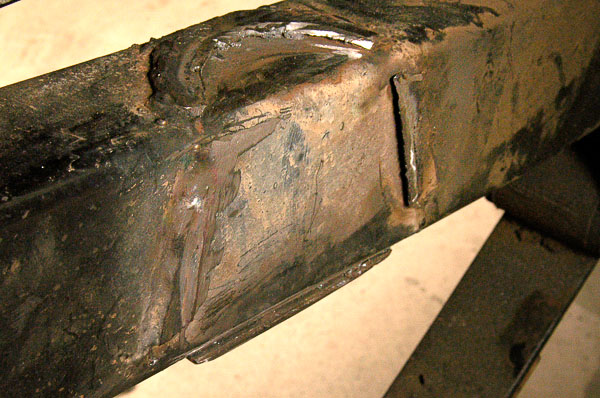
This is as close as I need to grind; the new brackets attach to the left of this point. Brackets can now be fitted up snugly. Old welds and bracket material will be welded to the frame for appearance sake. I will also weld a horizontal bead across the lower ledge where remnant bracket material sticks out below the frame rail. Click here to see this project move through the welding phase.

